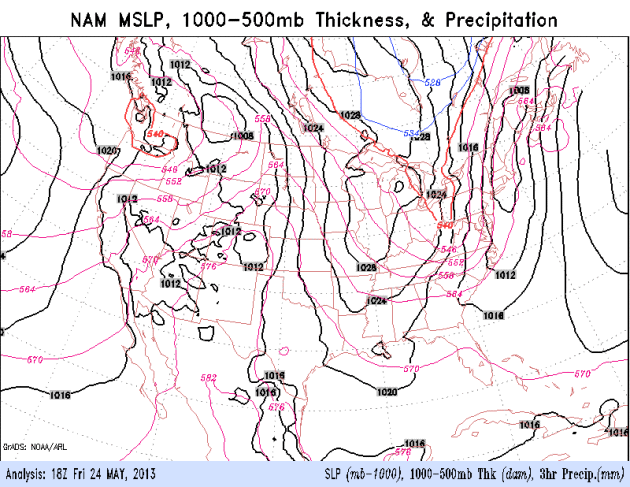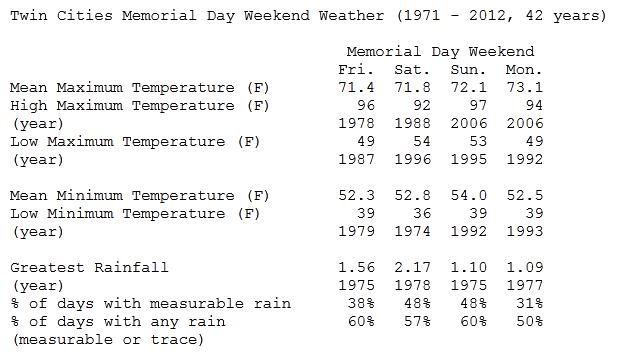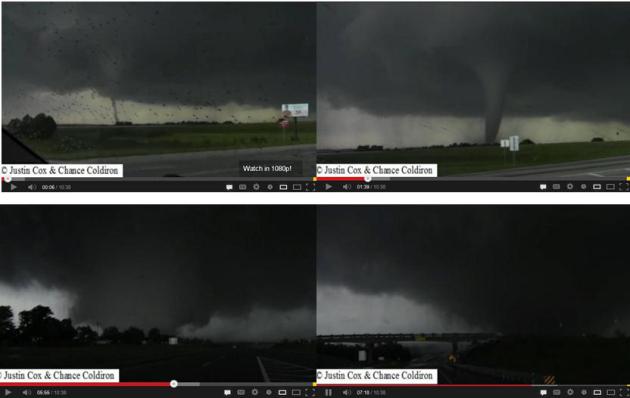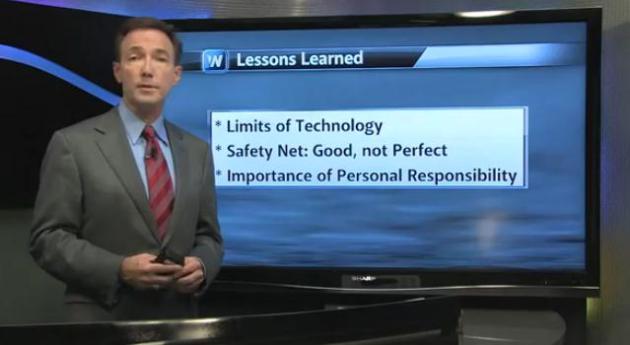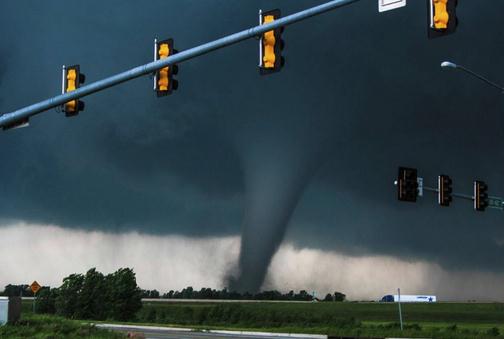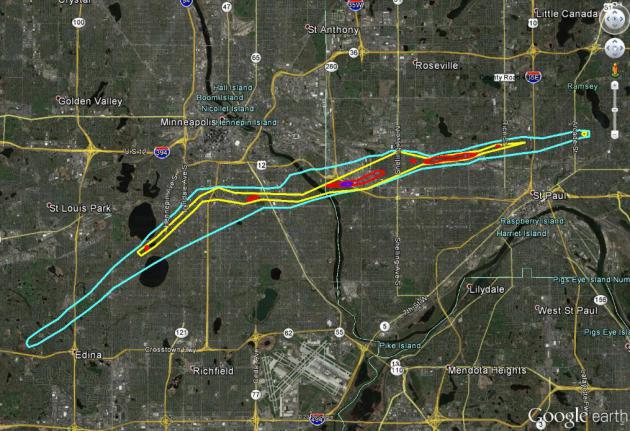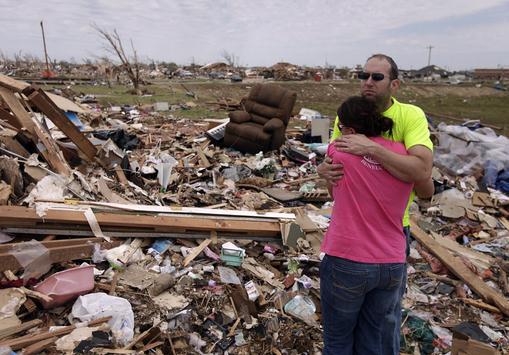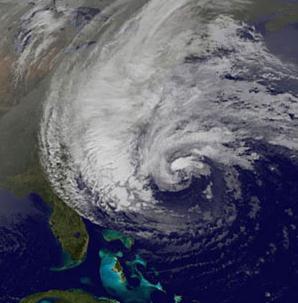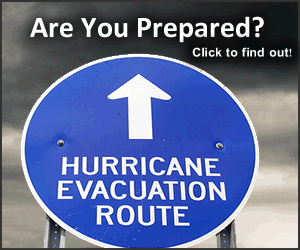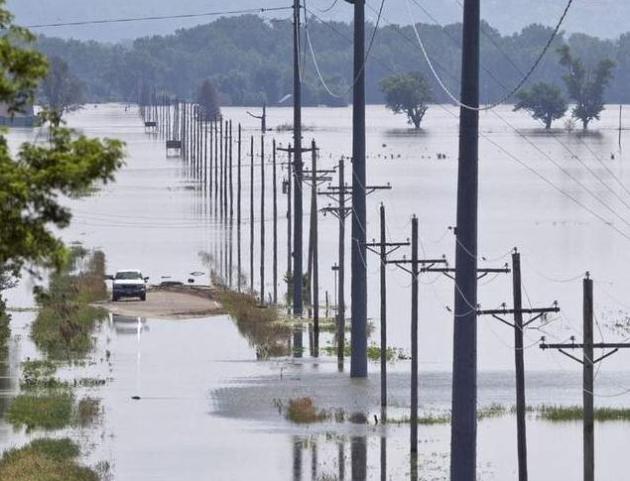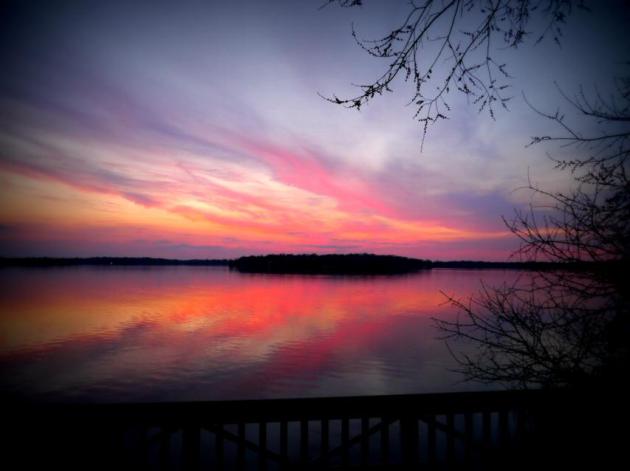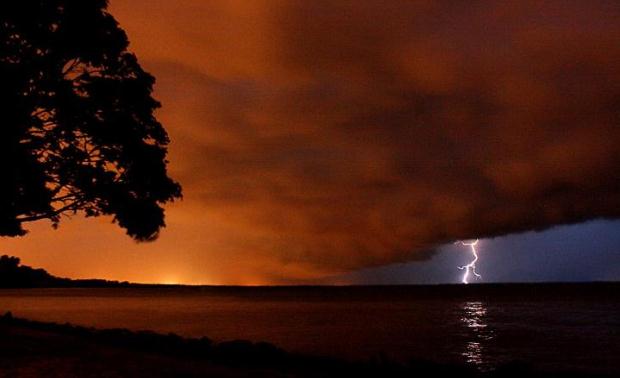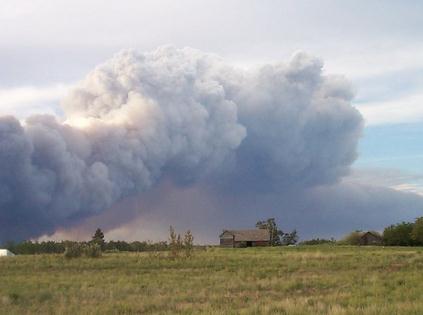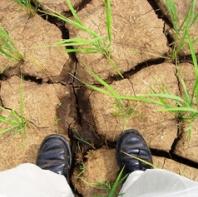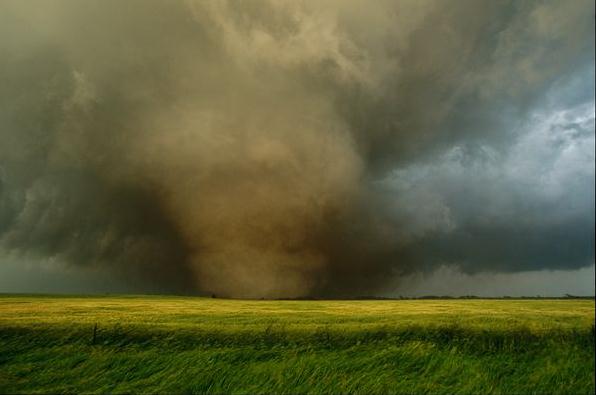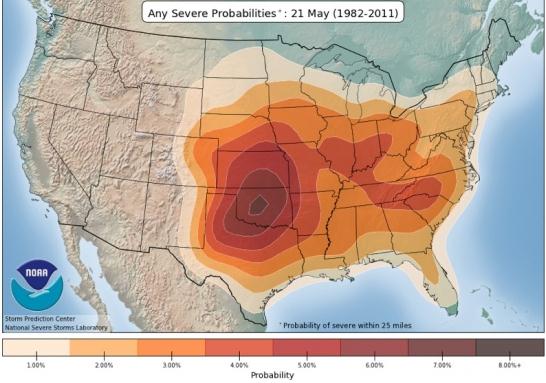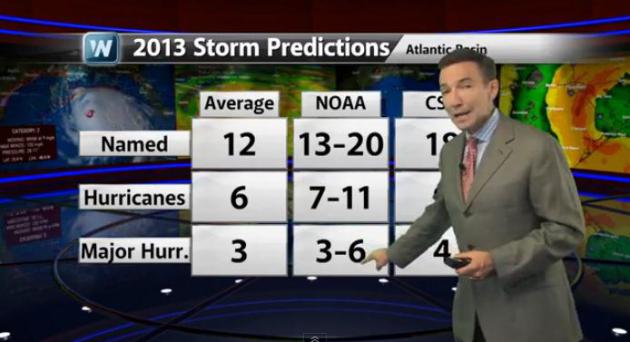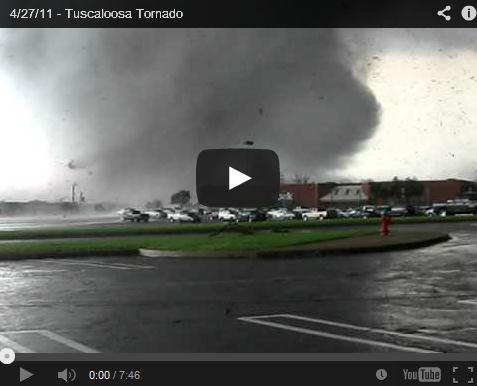Looks Like a Holiday
First let me compliment you on your lawn! Never
greener. Flowers are popping up nicely, water in our lakes, farmers
breathing a big sigh of relief as the drought eases statewide. No
drought in the metro; we've gone from 67 percent of Minnesota in
severe/extreme drought back in early April to 7 percent of the state
now. So we have something to show for our lousy spring, right?
The holiday forecast?
How 'bout that new Vikings stadium!
I'm stalling because I'm not thrilled with the forecast either.
"Paul, can't one of your new companies make it
stop raining on the weekends?" someone asked me yesterday. Any weather
modification company would have one mad scientist, and 50 lawyers to
handle all the lawsuits. Because you truly can't please all the people
all the time.
Today is the coolest day; highs stuck in the
upper 50s and low 60, more clouds than sun with a passing shower,
especially over far southern Minnesota. A heavier T-shower is possible
Sunday, again Monday, but the latest model runs don't look quite as wet
from the MSP metro on north, keeping the heaviest storms over far
southern counties. There may be a few sunny breaks, especially up
north, but I can't promise beauty and splendor - a bit cool for the
lake, not that lake water temperatures are even close to swimmable. We
finally mellow to 70F Memorial Day (cue a brass band and chorus line);
peeks of sun with another T-storm for good measure.
80s return midweek; a stormy, potentially severe
pattern the next 2 weeks. Everything is being delayed by a good month -
I expect May weather to finally arrive in June, and something tells me
we'll be spending some quality time in our basements. Severe season is
just starting.
Slow Warming Trend. Today should be the coolest day
in sight, highs in the 50s to low 60s under a mostly cloudy sky
(although it doesn't look as wet as models were suggesting yesterday).
60s are possible Sunday, maybe low 70s on Memorial Day if the sun peeks
out for an hour or two, but a few T-storms may bubble up. 80s return by
the middle of next week, a wet stormy pattern in place for at least the
next 2 weeks.
Spotty Wetness. A shoving match between hot, sticky
air to our south and cool, Canadian air draining south of the border
will whip up plenty of clouds over the weekend, the best chance of
showers and heavier T-showers south and west of the Twin Cities. No
steady, all-day rains, but a passing shower is possible. By Tuesday and
Wednesday the warm front lifts north, allowing temperatures to reach the
80s. NAM model: NOAA.
Historical Memorial Day Holiday Weekend Weather In The Twin Cities. Information courtesy of the
Minnesota Climatology Working Group: "
Beginning
in the late-1860's, Memorial Day was traditionally observed on May 30
(at least in northern states). The congressionally-mandated Memorial
Day holiday weekend (last Monday in May) commenced in 1971. The
investigation was limited to the period of time since the formal
designation of the Memorial Day holiday weekend (42 years of data,
1971-2012). Memorial Day can occur as early as May 25 and as late as May
31. Given the fact that the dates of the holiday weekend float about,
don't put too much stock in the climatological significance of the
statistics offered below. However, the numbers are fun to mull over. It
appears that Memorial Day is often the nicest day of the weekend."
Wet May. No, this won't come as a shock, but we are
muddling through yet another cool, wet month. Dr. Mark Seeley has some
interesting details in this week's edition of
WeatherTalk; here's an excerpt: "...
The
month of May has brought measurable rainfall on many days. Of the
first 24 days of the month many observers report rainfall on 15 or 16
days, a very high frequency. Accumulated rainfall for the month is
already record-setting at many southern Minnesota locations, with a week
to go in the month. Some of those already reporting record rainfall
amounts for the month include:
12.13 inches at Grand Meadow, 9.16 inches at Spring Valley, 9.03 inches
at Austin, and 8.63 inches at Rochester. The all-time maximum
rainfall for the month of May in Minnesota is 15.79 inches at St
Francis (Anoka County) in 2012. If Grand Meadow (Mower County) has a
wet last week of May, they may threaten that state record this month.
For southeastern Minnesota counties May of 2013 already ranks as the
5th wettest May in history, averaging nearly 7 inches of rainfall.
This number is likely to increase over the next week before the month
concludes next Friday..."
Drought Continues To Ease. The entire Twin Cities
and St. Cloud metro areas are officially out of the drought now,
lingering pockets of moderate to severe drought over southwestern
Minnesota, but conditions continue to improve statewide. Yes, this
spring has been a bust, but at least there's water in our lakes, and
look at how good your lawn looks! Details from the
Minnesota Climatology Working Group: "
The U. S. Drought Monitor, released on May 23 places portions of southwest Minnesota in the Severe Drought category (map at right).
Only 7 percent of Minnesota's landscape is in Severe Drought, a
substantial improvement over early April when 67 percent of Minnesota
was experiencing Extreme Drought or Severe Drought. The maximum
geographic extent of the present drought was late autumn 2012 through
mid-winter when 83 percent of the state was rated in the Extreme
Drought or Severe Drought categories..."
Lifecycle Of A Weather Monster. Here is some of the
most remarkable raw tornado footage I've ever seen,courtesy of Justin
Cox and Chance Coldiron. This is not for broadcast video; details on
their intercept with the Moore EF-5 via
YouTube: "
Raw
footage of Fast Unit 70's (Chance Coldiron & Justin Cox) coverage
of the Moore tornado that was used by KOCO5 during the event on May
20th, 2013. We watched as the tornado formed in front of us and rapidly
intensified then moved across highway 37 in Newcastle, OK. Then the
tornado continued to intensify as it tracked across the Canadian River
and the interstate 44 bridge. The monster tornado was filmed from
close range off the I-44 bridge north of Newcastle as it was headed for
Moore."
Lessons Learned. It was a long week chained to the
Doppler radar. In light of the destruction in Moore, failure of
GOES-13, and some troubling trends in the Arctic I recorded this
YouTube clip, courtesy of WeatherNation TV: "
This
is your chance to get inside the mind of Meteorologist Paul Douglas.
What is he thinking about this week? Tornado safety, a satellite going
dark and Arctic evacuations."
Racing The Clock And A Storm: A Way Of Life In Tornado Alley. Here's a clip from a
New York Times article
on how Oklahomans deal with tornado season, an amazing,
minute-by-minute account of the minutes leading up to Moore's EF-5: "...
In this breeding ground of Oklahoma tornadoes,
people prepare for the season with the care that the defensive
coordinator for their Sooners prepares for the inevitable autumn. They
develop family plans, hang on the words of meteorologists, and, in
places like Moore, become accustomed to the Saturday noontime testing of
emergency sirens. At the same time there exists disbelief that the
devastation visited upon neighbors could ever happen to them or, that
is, could ever happen to them again. Amid all the siren tests and
awareness and false alarms, the warning can still be a half-hour, maybe
a little more, maybe a little less. This means you must stop what you
are doing, shake off the disbelief, track down loved ones and find
shelter, all in the time it takes to watch a few rounds of “Jeopardy!"...
Photo credit above: "
A handout photo of a tornado in
Newcastle, Okla., before it reached Moore, about 10 miles away, on May
20, 2013. With authorities saying they have likely recovered all the
bodies to be found beneath the rubble left by the Category 5 tornado,
the focus turned to the long and expensive path of recovering from one
of the most catastrophic storms in Oklahoma's history." (Nick Rutledge via The New York Times).
5 Myths About Tornadoes. Meteorologist Mike Smith makes some very good points in this story at
The Washington Post; here's an excerpt that caught my attention: "...
But
many misconceptions persist — misconceptions that can encourage bad
policy and put lives at risk. I’d like to dispel some of the myths.
1. Meteorologists aren’t any good at forecasting these storms.
How does 99.3 percent sound? In 2011, 553 people lost their
lives in tornadoes. For all but four of those victims (99.3 percent),
both a tornado watch and a tornado warning were in effect before the
storm arrived. Modern tornado warnings are Nobel Prize-worthy endeavors
that combine weather science, social science and technology. As
recently as 1990, people in the path of a tornado were lucky to get
five minutes’ warning. Now, thanks to advances in radar, computer
simulations and research on how tornadoes develop, the average “lead
time” is 12 minutes — and more than 15 minutes for major tornadoes. The
city of Moore had a stunning 36 minutes of warning..."
Moore Tornado Track Superimposed Over MSP Metro. A
track from Edina to Maplewood? That's what residents of Oklahoma's
southern suburbs, centered on Moore, enduring Monday afternoon, with
patches of EF4 to EF5 damage (highlighted in red). Thanks to
WeatherNation TV meteorologist D.J. Kayser for putting this story into
local perspective. This is the kind of worst-case scenario that keeps me
up at night. God-willing this will never happen, but we need to
prepare for the worst, and hope for the best. An EF-4 can't hit the
metro? Tell that to residents of Fridley.
Moore, Oklahoma: Before And After The Tornado. This
ESRI URL shows the implications of an EF-5 tornado, with devasting detail that I haven't seen anywhere else.
Unimaginable. "
Ryan Steele hugs his girlfriend
Lauren Troxell in what is left of the home he shared with his parents
after it was destroyed by a tornado in Moore, Okla., Thursday. May 23,
2013. Troxell is from Tulsa and Steele was getting ready to move to
Tulsa." (AP Photo/Tulsa World, Mike Simons)
Weather Service Systems Crumbling As Severe Weather Escalates.
Failing weather satellites, NWS web sites going down in the south, the
Chicago office of the NWS unable to issue severe storm warnings - what
is going on? Here's an excerpt from The Washington Post's
meteorologist Jason Samenow at
The Capital Weather Gang: "
As
painfully obvious from the recent events in Oklahoma, tornado season
is in full gear. Meanwhile, hurricane season is a week away. Yet
budget woes and multiple system failures at the National Weather
Service in the past week, not to mention staffing shortages, are raising
concerns that its ability to warn the public of hazardous weather
could crack at any time. In the past 5 days alone, a telecommunications
outage near Chicago made it difficult for NWS forecasters to issue
warnings, a major weather satellite failed, the website for the entire
NWS Southern Region went down, and a NWS official in tornado alley
declined to launch a weather balloon citing budget concerns. These
problems are symptomatic of insufficient funding and dated
infrastructure, advocates for more generous NWS budgets say. What
follows is an overview of the problems NWS has encountered, just since
Sunday..."
The timing of these technical malfunctions and NOAA budget challenges and proposed furloughs is unfortunate...
Tornadoes Were Just The Beginning. This Hurricane Season Is Going To Be Stormy. Here's an excerpt from
Time Magazine: "...
Altogether
NOAA predicts a 70% likelihood that 13 to 20 named storms—which have
winds that sustain at 39 mph or higher—will occur, of which 7 to 11
could become hurricanes (winds higher than 74 mph). Of those three to
six may become major hurricanes, which means Category 3 to 5, with
winds above 11 mph. That’s all well above the average for an Atlantic
hurricane season, which lasts from June 1 to the end of November. Why
will this summer potentially be so stormy? For one, an atmospheric
climate pattern, including a strong African monsoon, that’s been
ongoing since 1995 will help supercharge the atmosphere for tropical
storms. Warmer-than-average water temperatures in the tropical Atlantic
and the Caribbean Sea will lead to more of the wet, hot air that
provides the fuel for hurricanes. And there is no El Nino—the
alternating climate pattern that means unusually warm sea
temperatures—which would usually suppress the formation of hurricanes..."
Photo credit above: "
Lightning in the sky over debris from the tornado that devastated Moore, Okla., Thursday, May 23, 2013." (AP Photo/Tulsa World, Mike Simons)
2013 Atlantic Hurricane Season Expected To Be Active.
2012 saw 19 named storms, the 3rd busiest year on record. The last
major hurricane to hit the USA was Wilma in 2005. That 7 year stretch
(of no category 3+ hurricanes) is the longest on record, so we are
overdue for a significant hurricane landfall. NOAA came out with their
official predictions on Thursday; based on a variety of factors it
promises to be a very active hurricane season, details via
Climate Matters: "
NOAA
released its annual Atlantic Hurricane Season Predictions.
Meteorologist Paul Douglas shares the factors forecasters consider when
coming up with their numbers. What do you think of NOAA's predictions?"
NOAA Predicts Active 2013 Atlantic Hurricane Season.
We're in an ENSO-neutral period right now, no La Nina cooling or El
Nino warming. El Nino also tends to turn on stronger winds in the
tropics, which can deter tropical storm formation. It may be another
very active season - here are a few excerpts from
NOAA: "
For
the six-month hurricane season, which begins June 1, NOAA’s Atlantic
Hurricane Season Outlook says there is a 70 percent likelihood of 13
to 20 named storms (winds of 39 mph or higher), of which 7 to 11
could become hurricanes (winds of 74 mph or higher), including 3 to 6
major hurricanes (Category 3, 4 or 5; winds of 111 mph or higher)....
Three climate factors that strongly control Atlantic hurricane
activity are expected to come together to produce an active or
extremely active 2013 hurricane season. These are:
- A continuation of the atmospheric climate pattern, which
includes a strong west African monsoon, that is responsible for the
ongoing era of high activity for Atlantic hurricanes that began in 1995;
- Warmer-than-average water temperatures in the tropical Atlantic Ocean and Caribbean Sea; and
- El Niño is not expected to develop and suppress hurricane formation..."
Hurricane Outlook: Another Busy Atlantic Season. There's some good information and statistics in this AP article, courtesy of
boston.com: "...
This
year, all the factors that go into hurricane forecasts are pointing to
an active season, or an extremely active one, said lead forecaster
Gerry Bell of the Climate Prediction Center. Those factors include:
warmer than average ocean waters that provide fuel for storms, a
multi-decade pattern of increased hurricane activity, the lack of an El
Nino warming of the central Pacific Ocean, and an active pattern of
storm systems coming off west Africa. The Atlantic hurricane season
goes through cycles of high and low activity about every 25 to 40 years
based on large scale climatic patterns in the atmosphere. A high
activity period started around 1995, Sullivan said..."
As Need For New Flood Maps Rises, Congress And Obama Cut Funding. Here's an excerpt from
OPB News: "...
Congress
has cut funding for updating flood maps by more than half since 2010,
from $221 million down to $100 million this year. And the president’s
latest budget request would slash funding for mapping even further to
$84 million — a drop of 62 percent over the last four years. In a
little-noticed written response
to questions from a congressional hearing, FEMA estimated the cuts
would delay its map program by three to five years. The program “will
continue to make progress, but more homeowners will rely on flood hazard
maps that are not current,” FEMA wrote"...
GOES-14 Starts Service As GOES-East. NOAA is using a spare satellite to try to make up for the GOES-13 outage; here's an update from
The University of Wisconsin CIMSS Satellite Blog:
"At 1000 UTC (Thursday), GOES-14 imagery started flowing to AWIPS as
the GOES-East satellite. Work continues on evaluating the status of
GOES-13. GOES-14 remains at 105.5 West, and GVAR data are being
broadcast directly from GOES-14. Updates on GOES-13 — and all
satellites — can be found
here."
John McCain: Cable TV, The Right Way. The Television Consumer Freedom Act? Here is a clip of an Op-Ed from Senator John McCain at
The Los Angeles Times that caught my eye: "...
The numbers are striking. According to the Federal Communications Commission,
the price for basic cable has grown by an average of 6.1% a year over
the last 16 years — three times the rate of inflation and far
outpacing the average American's paycheck. Cable bills are projected
to continue rising to an average of $200 a month by 2020. The 82% of
American households that subscribe to cable or satellite television
are stuck paying escalating prices for "bundled" packages of more than
100 channels, despite the fact that the average viewer tunes in to
only about 18 of them. Reinforcing this fundamental unfairness is a
federal regulatory and legal framework that tilts in favor of cable
companies and television programmers at the expense of consumers..." (photo credit: readwrite.com).
From Here You Can See Everything. Enjoy binge TV
viewing? Hooked on Netflix? So am I. Maybe that's not such a good thing,
long term, as argued in this thought-provoking piece at
themorningnews.org; here's an excerpt: "...
I
always binge on media when I’m in America. But this time it feels
different. Media feels encroaching, circling, kind of predatory. It
feels like it’s bingeing back. The basic currency of consumer media
companies—Netflix, Hulu, YouTube, NBC, Fox News, Facebook, Pinterest,
etc.—is hours of attention, our attention. They want our eyeballs
focused on their content as often as possible and for as many hours as
possible, mostly to sell bits of those hours to advertisers or to
pitch our enjoyment to investors. And they’re getting better at it,
this catch-the-eyeball game. Consider Netflix. These days, when one
episode of The West Wing ends, with its irresistible moralistic
tingle, I don’t even have to click a button to watch the next one. The
freshly rolling credits migrate to the top-left corner of the browser
tab, and below to the right a box with a new episode appears, queued
up and just itching to be watched. Fifteen seconds later the new
episode starts playing, before the credits on the current episode even
finish. They rolled out this handy feature—they call it
Post-Play—last August. Now all I have to do is nothing and moralistic
tingle keeps coming...." (photo credit:
wired.com).
The Suicide Epidemic. I've lost too many friends and
family members to suicide. As a society we don't stigmatize people
with diabetes, and yet another chemical imbalance, depression, is often
brushed under the carpet. No, we can't possibly admit to that, as if
it's a character flaw or genetic defect. But it's not. Depression is
treatable, with medication and therapy everyone can be helped. We have
to keep pounding home that message, to our friends, colleagues and
family members, and if you suspect someone is in a dark place, don't
ignore it - do something about it. Help them find the help they need.
Read this article at
The Daily Beast and then do something positive, like supporting
SAVE (Suicide
Awareness, Voices of Education), based in Bloomington with an
international outreach. Their director (and a good friend of mine) Dr.
Dan Reidenberg, has testified before Congress. SAVE has an amazing staff
and volunteers working 24/7 to avoid senseless, horrific tragedies.
Consider attending their annual Fashion Show to raise more funds to help
more people in need - next Thursday, May 30, in Minneapolis.
Details are here. I feel strongly about SAVE and it's mission - I hope to see you there.
Climate Stories...
A Mission On Climate Change. Here's a portion of an Op-Ed at
The Washington Post: "...Only someone who was ignorant of basic science — or deliberately being obtuse — could write a sentence like this one: “
Contrary
to the claims of those who want to strictly regulate carbon dioxide
emissions and increase the cost of energy for all Americans, there is a
great amount of uncertainty associated with climate science.” Oh,
wait, that’s a quote from an op-ed in The Washington Post by Rep. Lamar Smith (R-Tex.),
chairman of the House Committee on Science, Space and Technology. Yes,
this is the officially designated science expert in the House of
Representatives. See what I mean about Obama likely having to go it
alone? For the record, and for the umpteenth time, there is no “great
amount of uncertainty” about whether the planet is warming or why. A new study
looked at nearly 12,000 recently published papers by climate
scientists and found that, of those taking a position on the question,
97 percent agreed that humans are causing atmospheric warming by
burning fossil fuels, which releases carbon dioxide and other
greenhouse gases..."
Photo credit above: Brad Birkholz.
Climate Change And Wildfire - Research Examines Relationship.
PlanetSave has the story; here's an excerpt: "
Changes
in the climate are intimately connected with wildfires, both causing
them and being being caused by them. Recent research has estimated
that wildfires will increase by around 50% across most of the US, and
by as much as 100% in the West, by 2050, as a result of climate
change. And with this increase in the frequency/extent of wildfires,
greenhouse gas emissions will rise too..."
Photo credit above: "
Wild Fire via Flick CC."
Floating Research Station In Need Of Evacuation. A
friend forwarded me this article late last night - a Russian research
facility near the North Pole being evacuated due to unstable ice. In
May? More evidence of profound changes at the top of the world. Here's
an excerpt from
The Barents Observer: "
The
scientific research station was placed on the ice floe in October
2012 and was planned to stay there until September. Now the floe has
already started to break apart and the crew has to be evacuated as soon
as possible. Russia’s Minister of Nature
Resources and Ecology Sergey Donskoy has ordered that a plan for
evacuation should be ready within three days, the Ministry’s web site reads. “A
collapse of the station’s ice floe poses a threat to its continued
work, the lives of the crew, the environment close to the Canadian
Economic Zone and to equipment and supplies”, a note from the minister
reads..."
Photo credit above: "Some 16 scientists have spent the winter on the floating research station North Pole-40." (Photo: AARI)
The Odds Of Disaster: An Economist's Warning On Global Warming. Here's an excerpt of a Paul Solman interview with economist Martin Weitzman at
The PBS NewsHour: "...
Once
it is in the atmosphere, CO2 remains there for a very long time. Even
if CO2 emissions were cut to zero at some point in the future (a very
drastic assumption), about 70 percent of CO2 concentrations over the
pre-industrial level of 280 ppm would remain in the atmosphere for the
following one hundred years, while about 40 percent would remain in
the atmosphere for the following one thousand years. This, along with
the possibility of bad outcomes, is the argument for keeping CO2
concentrations from reaching very high levels. Most people do not
realize how difficult it is to stabilize CO2 concentrations. It is not
nearly enough to stabilize CO2 emissions, which would cause CO2
concentrations to keep on increasing at the same rate as before. (This
is because changes in concentrations are proportional to emissions.) The
problem is that if you want to stabilize CO2 concentrations, you have
to make drastic cuts in CO2 emissions. This is no easy feat. Yet,
unless it is done, we are liable to reach very high levels of CO2
concentrations. Global warming skeptics would dispute or minimize the
link between CO2 concentrations and temperature increases. Here is yet
another uncertainty -- are they or the mainstream climate scientists
more right than wrong? But can we afford the luxury of assuming that a
small minority of climate skeptics are more correct than the vast
majority of mainstream climate scientists? What is the probability of
that?..."
Photo credit above: "
No one can say with any assurance
what the dollar value of damages would be from the highly uncertain
climate changes that might accompany a planet earth that is steadily
warming.: PBS NewsHour.
Has Global Warming Stalled? Noted climate scientist Kevin Trenberth has some answers in a post at
The Royal Meteorological Society; here's an excerpt: "
Has
global warming stalled? This question is increasingly being asked
because of impressions about local weather being cool and wet, or
because of impressions that the global mean temperature is not
increasing at its earlier rate or the long-term rate expected from
climate model projections. The answer depends a lot on what one means by
“global warming”. For some it is equated to the “global mean
temperature”. That quantity keeps going up but also has ups and downs
from year to year. More on that shortly. Why should it go up? Well,
because the planet is warming from human activities. With increasing
carbon dioxide and other heat-trapping greenhouse gases in the
atmosphere, there is an imbalance in energy flows in and out of the
top-of-atmosphere: the greenhouse gases increasingly trap more
radiation and hence create warming. "Warming" really means heating,
and so it can be manifested in many ways. Rising surface temperatures
are just one manifestation. Melting Arctic sea ice is another. So is
melting of glaciers and other land ice that contribute to rising sea
levels. Increasing the water cycle and invigorating storms is yet
another. However, most (over 90%) of the energy imbalance goes into
the ocean, and several analyses have now shown this..."
* Trenberth's article at The Conversation, with additional graphics and imagery, is
here.
Hot In My Backyard. This compilation of radio reports is worth a listen; here's an overview of the series from
This American Life: "
After
years of being stuck, the national conversation on climate change
finally started to shift — just a little — last year, the hottest year
on record in the U.S., with Hurricane Sandy flooding the New York
subway, drought devastating Midwest farms, and California and Colorado
on fire. Lots of people were wondering if global warming had finally
arrived, here at home. This week, stories about this new reality...."
Heat-Related Deaths May Increase With Climate Change. Here's an excerpt of a story from LiveScience and
Fox News: "
Heat-related
deaths in New York City's borough of Manhattan may rise about 20
percent over the next decade, according to a new study. Researchers at
Columbia University in New York analyzed the relationship between daily
temperatures and temperature-related deaths
across all seasons between 1982 and 1999 in Manhattan, which comprises
the most densely populated county in the United States. The findings
were published online May 19 in the journal Nature Climate Change..."
Tornadoes And Climate Change: Huge Stakes, Huge Unknowns.
In light of the Moore, Oklahoma tornado disaster people are asking "is
there a link to a warmer, more energetic atmosphere?" Here's an
excerpt of a timely Jeff Masters post at
Wunderblog: "...
Is
climate change already affecting these storms? These are hugely
important questions, but ones we don't have good answers for. Climate
change is significantly impacting the environment that storms form in,
giving them more moisture and energy to draw upon, and altering
large-scale jet stream patterns. We should expect that this will
potentially cause major changes in tornadoes and severe thunderstorms.
Unfortunately, tornadoes and severe thunderstorms are the extreme
weather phenomena we have the least understanding on with respect to
climate change. We don't have a good enough database to determine how
tornadoes may have changed in recent decades, and our computer models
are currently not able to tell us if tornadoes are more likely to
increase or decrease in a future warmer climate..."
Image credit above: "Remarkable
video of the tornado that hit Tuscaloosa, Alabama on April 27, 2011,
part of the largest and most expensive tornado outbreak in U.S.
history--the $10.2 billion dollar Southeast U.S. Super Outbreak of
April 25 - 28, 2011. With damage estimated at $2.2 billion, the
Tuscaloosa tornado was the 2nd most expensive tornado in world history,
behind the 2011 Joplin, Missouri tornado. Fast forward to minute four
to see the worst of the storm." Source: Weather Underground.
Tornadoes And Global Warming: Is There A Connection? Here's a good summary of the uncertainty involved in connecting the dots with climate change and tornadoes from
National Geographic: "...
Linking
any particular weather event to climate change is always tricky,
because weather is inherently random. But weather patterns can speak to
a warming planet. Scientists can detect that extreme rain events, for
instance, are already happening more often than they used to, and
that a warmer atmosphere with more water vapor in it is making such
events more likely. Tornadoes are different. Global warming may well
end up making them more frequent or intense, as our intuition would
tell us. But it might also actually suppress them—the science just
isn't clear yet. Neither is the historical record..."
Photo credit above: "
Scientists can't say yet whether global warming will increase tornadoes." Photograph by Carsten Peter, National Geographic
Making Sense Of The Moore Tornado In A Climate Context. Climate Central meteorologist Andrew Freedman does a good job connecting the dots; here's an excerpt: "...
Tornado data
does not reveal any clear trends in tornado occurrence or deaths that
would suggest a clear tie to global warming, at least not yet. A recent paper
published in the Bulletin of the American Meteorological
Society found that the occurrence of EF-1 and stronger tornadoes on
the Enhanced Fujita Scale has shown no trend since 1954, which was the
first year of near real-time data collection. Instead, an increase in
tornado counts of EF-0 or stronger tornadoes has been attributed to
an uptick in observations of very weak tornadoes. The Enhanced Fujita
Scale measures tornado strength based on the extent and type of damage
that they cause (no surface weather station has ever survived a
direct tornado strike to take wind measurements from inside a twister)..."
Graphic credit above: "
Probability
of severe thunderstorms within 25 miles of a location as averaged
from 1982-2011. This shows the highest odds of severe weather on
Monday were in Oklahoma." Credit: Storm Prediction Center.


